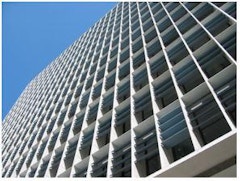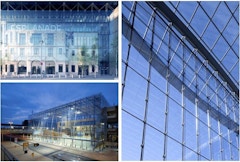
165 results
-
 In recent decades, there has been increased attention to reduce the operational energy performance of buildings. Stringent legislation on building…
In recent decades, there has been increased attention to reduce the operational energy performance of buildings. Stringent legislation on building… -
Vertical Louvered Solar Control
- Paper by Clifton Fordham, RA, LEED AP
Exterior shading devices, when typically used, are horizontal planes that are most effective at the south face of buildings in the northern
-

City Development and Cladding Design
- Paper by Hadil Abdallah, Building Sciences Consultant Girma Bitsuamlak, Professor and Canada Research Chair in Wind Engineering at the University of Western Ontario Hamid Vossoughi, PE, P. ENG., Senior Principal
High-rise buildings in growing cities could become more vulnerable to variations in wind flow due to the continuous changes in urban topology. The… -
Adaptive Facades
- Paper by Walter Haase · Werner Sobek · Enrica Oliva · Michele Andaloro
Facade engineering aims at appropriately balancing the demands imposed by the context and the capabilities inherent to the materials, the geometries
-

Invert Auto-Shading
- Paper by Jae Yong Suk, Assistant Professor Doris Sung, Associate Professor
Allowing sufficient amount of natural light while avoiding excessive sunlight penetration is often hard to achieve with static facade systems due to… -

Autonomous or Appropriate
- Paper by Katrin Terstegen
This paper examines two profoundly different design approaches: one, herein called ‘autonomous’, where the building’s design is governed by internal
-
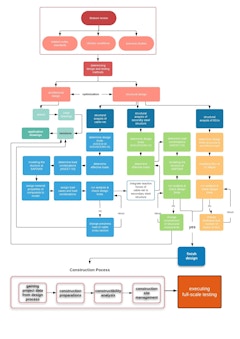
From Design to Experiment
- Paper by E. Yagdir CELIKER, MSc. · Oguz C. CELIK, PhD.
Flat cable-net facades are form-active structures which provide maximum transparency by means of point fixing components, tensioned cables, and
-

Thinking About Facades
- Paper by Marc Schiler, FASES, LC,
There have been three decades of liberating developments in the application of descriptive geometry and freeform design methods, as well as the… -

Kinetic Shading Systems
- Paper by Alireza Jahanara, Negar Kalantar,
This study focuses on experiments in kinetics and architectural skins. More extensively, it introduces a solution for environmental design issues and… -
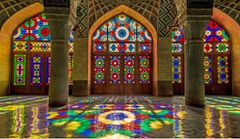
Smart Colored Window Technology
- Paper by Negar Heidari Matin · Seyed Mojtaba Mirabedini · Zhina Rashidzadeh
Traditional architecture can be a valuable source of inspiration for designers. Sustainable design concepts in traditional architecture have been
-
Generative Design Tool
- Paper by Amir Hosseinzadeh Zarrabi · Mona Azarbayjani · Maryam Tavakoli
The piezoelectric facade as a self-sustained technology can generate a considerable amount of energy by converting swaying motions (actuated by the
-
Integrated Building Control System
- Paper by Jae Yong Suk, Ph.D. · Keith Graeber, PE · Andrew Harper, PE · Michael Siminovitch, Ph.D.
Integrated management of commercial lighting, heating, ventilation and air conditioning systems is considered as one of the most promising building
-

Form Follows Well-Being
- Paper by David Bjelland M.Sc. · Prof. Dr. sc. hum. MArch Dipl.-Ing. Timo Schmidt
Recent planning recognizes a growing demand for buildings that provide higher levels of occupant well-being. Often, well-being in buildings is
-

Mixed Reality in Facade Education
- Paper by Phillip Anzalone AIA · Amber Bartosh, RA LEED AP BD+C
Developments in performative computational analysis, mass customization, and complex form manipulation revolutionized building envelope design
-
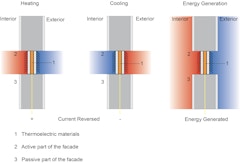
Novel Active Facade Systems and Their Energy Performance in Commercial Buildings
- Paper by Ajla Aksamija · Mahsa Farid Mohajer · Zlatan Aksamija
This article presents results of a research study that focuses on understanding energy performance of novel facade systems that integrate
-
Determination of Surface Flaw Parameters for Annealed and Fully Tempered Glass Exposed to NaCl
- Paper by Nabhajit Goswami, PhD, Senior Facade Engineer Joshua Schultz, PhD, PE, LEED AP, Associate Professor Patrick Ferro, PhD, PE, MBA, Professor Stephen M Morse, PhD, PE, Associate Teaching Professor, Mechanical Engineering-Engineering Mechanics Affiliated Assistant Professor, Civil, Environmental, and Geospatial Engineering
The use of glass in the exterior facades provides greater light transmission into the building and improved views for occupants. Coastal areas in… -

Carbon-Dioxide-Inhaling Facade
- Paper by Prof. Dr. Timo Schmidt, Professor for facade technology and design Carmen Herrmann, Student Dr. Michael Lakatos, Professor Daniel Zabicki, Scientific Employee Prof. Dr.-Ing. Michael Wahl, Professor Kai Scherer, PhD Student
3.5 billion years ago, cyanobacteria created the foundation for life on Earth by producing the oxygen basis for our atmosphere. Should we once again… -
Cities under Climate Threat - Philadelphia, Rome and Venice
- Paper by Edgar Stach, Dr., Ing, AIA/IA · Shreya Kanther · Alexis Manfre
The impacts of climate change, driven by increasing extreme temperature, sea-level rise, and heavy precipitations, interact and play an essential
-

Kinetic Solar Envelope
- Paper by Christina Koukelli · Alejandro Prieto · Serdar Asut
Kinetic responsive systems are gaining attention in architectural applications, to reduce the building’s energy consumption and environmental impact,
-

Silicone Spandrel Glass Opacifiers
- Paper by Scott Norville · Samir Blanchet · George Torok · Kris Vockler · John Swanson · Chris Barry · Lawrence Carbary · Stephane Hoffman · Timothy Krytenberg · Chris Fronsoe
Curtain wall design commonly uses insulating glass units for vision and spandrel glazing to provide better visual harmonization of building facade
